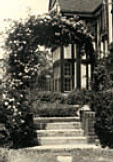|
|
DIRECTOR'S NOTES
|
THE DIRECTOR LADISLAV KABOS
SPEAKS ABOUT THE FILM
Ladislav/Lazslo Hudec was virtually unknown in Slovakia, so how did you initially become interested in him?
 Eight years ago I started to look for architects, which from various reasons left Slovakia and made their interesting work in abroad. I found that it is incredible number; more then 200 architects! First of all I was fascinating by the “Hollywood True-Life Story” of Ladislav Hudec. Hudec is a typical Slavonic name. And I was surprised, that the “world” knew him to be the Hungarian architect Lazslo Hugyecz / Hudec, born in the North Hungarian town of Besztercebanyia. But it was in the time of Austro-Hungarian Empire. This city is Eight years ago I started to look for architects, which from various reasons left Slovakia and made their interesting work in abroad. I found that it is incredible number; more then 200 architects! First of all I was fascinating by the “Hollywood True-Life Story” of Ladislav Hudec. Hudec is a typical Slavonic name. And I was surprised, that the “world” knew him to be the Hungarian architect Lazslo Hugyecz / Hudec, born in the North Hungarian town of Besztercebanyia. But it was in the time of Austro-Hungarian Empire. This city is
|
|
 fast 100 years called again Banská Bystrica and it is one of the important cultural and political centre of The Slovak Republic today. I was also surprised, that Ladislav Hudec is even buried in Banská Bystrica… but virtually unknown. So I decided to research more. fast 100 years called again Banská Bystrica and it is one of the important cultural and political centre of The Slovak Republic today. I was also surprised, that Ladislav Hudec is even buried in Banská Bystrica… but virtually unknown. So I decided to research more.
I didn’t want to research and come to the conclusion of whether Hudec felt himself to be more Slovak or Hungarian. It seems to me, that in today’s cosmopolitan world, this is a rather narrow-minded question and especially now, when both Slovakia and Hungary are under the common roof of the EU. I was interested in story of somebody who lost his home. Hudec was born in Austro-Hungarian Empire, which disintegrated after WWI. In its place new states were born. 30 years later – he lost his Shanghai’s home again… of somebody who lost his home. Hudec was born in Austro-Hungarian Empire, which disintegrated after WWI. In its place new states were born. 30 years later – he lost his Shanghai’s home again…
|

|
Why did you choose to use the Hudec children as the primary narrative device in your documentary?
 I researched that the children of Ladislav Hudec still live somewhere in USA and Canada. But even the architects and historians writing about Ladislav Hudec, didn’t know their addresses. I looked for it in phone books, Internet … and first I came to Alessa de Wet, the Ladislav Hudec daughter, now 82 years old. Alessa is living in Arizona, USA and she gave me contact to both brothers – Theo (85) in Canada and Martin (87) in Monaco. I researched that the children of Ladislav Hudec still live somewhere in USA and Canada. But even the architects and historians writing about Ladislav Hudec, didn’t know their addresses. I looked for it in phone books, Internet … and first I came to Alessa de Wet, the Ladislav Hudec daughter, now 82 years old. Alessa is living in Arizona, USA and she gave me contact to both brothers – Theo (85) in Canada and Martin (87) in Monaco.
|
|
They all were still full of energy with fascinating spirit, very educated; they were the mirror images of their father. All children were interested in making the journey following father’s long life footsteps. Alessa has never been to Slovakia.
I understood that it would be very exciting for them to visit Shanghai again - the city of their childhood and youth.

|

|
Much of the film in the movie is actually restored 16mm apparently shot by Hudec himself. Can you tell us more about this?
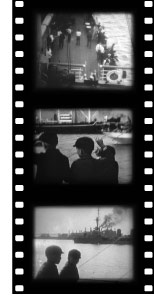 It was really just good luck that my son Michael Kabos, cinematographer, with help of Hudec’s son Theo discovered the 16mm films, shot by Ladislav Hudec (1927 – 1947) in China and Europe. They had been lying in the attic of The Hudec family House in Canada, in Victoria for decades. Hiding under layers of dust and mould, and in an extremely dry condition… On the reel cases was written by Hudec’s own hand, “1927”. In those days films were made from combustible materials. They could easily catch fire by themselves. It is strictly forbidden to transport them by airplane. So had a very difficult time dealing with this initial find. Luckily however, the films where made on non-combustible stock and we survived our flight back to Europe with the materials. It was really just good luck that my son Michael Kabos, cinematographer, with help of Hudec’s son Theo discovered the 16mm films, shot by Ladislav Hudec (1927 – 1947) in China and Europe. They had been lying in the attic of The Hudec family House in Canada, in Victoria for decades. Hiding under layers of dust and mould, and in an extremely dry condition… On the reel cases was written by Hudec’s own hand, “1927”. In those days films were made from combustible materials. They could easily catch fire by themselves. It is strictly forbidden to transport them by airplane. So had a very difficult time dealing with this initial find. Luckily however, the films where made on non-combustible stock and we survived our flight back to Europe with the materials.
It was a long and difficult story to save these unique films and put them to our FULL HD creative documentary. It presents never-before-seen footage from Slovakia, Budapest, Prague, Italy, Spain, New York, Japan, China… some home-movies show also the children, his wife and Hudec himself.
|
|
 He travelled all over the world, shooting the places of his inspiration, but it was also a documentary about normal everyday life and people with such extreme sensitivity, that it shows his deep social understanding. He has a wonderful composition of shots and this shows that his talent was many-sided. He was excellent photographer and cinematographer. He travelled all over the world, shooting the places of his inspiration, but it was also a documentary about normal everyday life and people with such extreme sensitivity, that it shows his deep social understanding. He has a wonderful composition of shots and this shows that his talent was many-sided. He was excellent photographer and cinematographer.
As a director I have a feeling that Hudec had thought during his lifetime that perhaps at sometime somebody would make film about him. He very carefully made his architectonical archive; with his own hand he described every photo and every postcard. So we discovered in Victoria University in Canada his first and only building outside of China.
 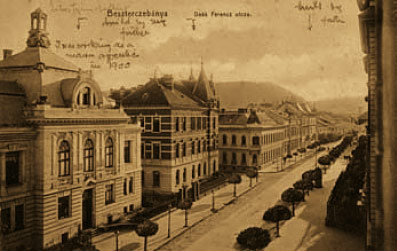
|

|
The English title of the film is “The Man Who Changed Shanghai“. This is a bold claim. Why did you choose it? What do you see as his most influential effect on the city Shanghai?
Oh, no – it only looks like a “bold claim“, before we discover the facts.
Hudec can be called “the father of high-rise architecture in Asia”. His Park Hotel built between 1932-1934 was not only the first one, but for many, many years also the only high-rise building in Asia.
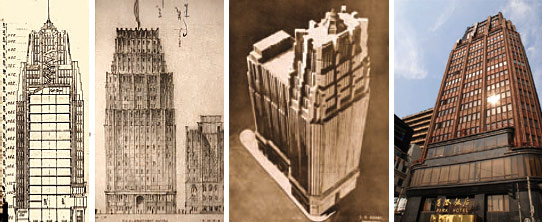
|
|
It was one of the first buildings to be built entirely from steel, with modern, entirely steel construction. The Park Hotel was the first high rise built on a swamp. Hudec pioneered this brand new technology of constructing high-rise buildings in very difficult geological conditions, such as on this swamp in Shanghai and it opened a whole new chapter of city planning for all of today’s developers.
His Park Hotel is still something of a jewel, which still ornaments the centre of Shanghai’s People’s Square. And important is also his development on the field of bringing air-conditioning to the city. His Grand Theatre was first air-conditioned cinema (and served an audience of up to 2400 people!). Also, the Country Hospital (1925), which he built, was already fully air-conditioned.
Between 1918 and 1947 he designed and built around 60 structures, which still stand as an important part of Shanghai’s history, culture and spirit.
|

|
What was Hudec’s role during the Second World War in helping to save the lives of Jews in Shanghai?
The Jews who had to run away from Germany in the 30’s and 40’s could come to Shanghai. The Canadians and Americans didn’t want them, but Shanghai was a very free city. But later they lost also in Shanghai their rights. Jews were confined to a ghetto in Hongkiu and other refugee camps. Hudec became Hungarian Honorary Consul in Shanghai. In this position he could make give passports to Jews who were in any way connected to the Austro-Hungarian Empire.
And they could then travel to the USA and Canada. In a diplomatic note from those times we can find that in Jewish refugee camps about 15 people were dying daily from starvation. In his position, Hudec managed to save many Jews.
There still exist a number of letters written by Jews to Ladislav Hudec expressing their gratitude for his help after the end of WWII.
|
|
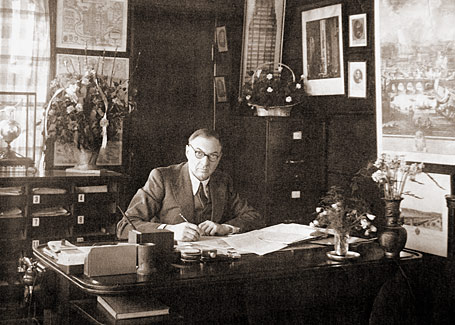
|

|
How would you sum up Hudec’s life story? Inspirational? Pioneering?
Hudec isn’t only a pioneer of architecture in the Far East, but his life shows also the important moments of history of the 20th century. Hudec lost “his home”, found a new one in Shanghai and again lost it. In the end, he went to the USA as displaced person, and there he couldn’t even continue in his architectural work.
He came to Shanghai and started literally from “nothing” to becoming the city’s most famous architect. He had to go through the Japan-China war and the outbreak of WWII in China… I already said: the life of Ladislav Hudec is a potential “Hollywood movie”.
|
|
“The Man Who Changed Shanghai” presents only a part of the fascinating and hitherto unknown story and conditions under which architectural works were created. And through the personal, authentic experiences of Hudec’s Children and Hudec’s unique films, the window is open to the previously unknown life of Europeans in China in the first half of 20th century.
I never heard before, how the Europeans really lived in Shanghai and knew nothing about the lives of the Chinese at those times. So I think: It is not only an amazing story, but also a major discovery for both Europeans and the Chinese.
|

|
How did you like shooting the documentary in a father-son partnership? You made a substantial part of the film with cameraman Michael Kabos, didn’t you?
 Initially, I wanted to make an artistically conceived portrait of the architect and his work in the style of my previous documentary “Moderna architektura na Slovensku“ /Modern Architecture in Slovakia/. With this aim in mind, I logically chose the same cameraman - Dodo Simoncic. Then I addressed various experts - architectural historians and art historians. Many of them had written or lectured about the works of L.E. Hudec, but nobody seemed to know where his children lived. We had no contact with the Chinese either. Initially, I wanted to make an artistically conceived portrait of the architect and his work in the style of my previous documentary “Moderna architektura na Slovensku“ /Modern Architecture in Slovakia/. With this aim in mind, I logically chose the same cameraman - Dodo Simoncic. Then I addressed various experts - architectural historians and art historians. Many of them had written or lectured about the works of L.E. Hudec, but nobody seemed to know where his children lived. We had no contact with the Chinese either.
As soon as I found Hudec’s children, the main burden of shooting the documentary shifted on to my son Michael.
|
|
 I needed a cameraman with a good command of English who had a positive attitude to authentic documentary, a cameraman for whom “the human touch” was important. Furthermore, Michael is also a novice in movie Zoufalci – The Dreamers (directed by Jitka Rudolfová, 2009, Czech Republic). I needed a cameraman with a good command of English who had a positive attitude to authentic documentary, a cameraman for whom “the human touch” was important. Furthermore, Michael is also a novice in movie Zoufalci – The Dreamers (directed by Jitka Rudolfová, 2009, Czech Republic).
Together with Michael we have already made several documentaries for the Czech Television, the most recent of these – Kamarátky na smrt (Unfailing Friends) won an Honorary distinction at the FITES Trilobit award-giving ceremony for 2008.
|

|
How does the city of Shanghai look after the preservation of its cultural heritage: specifically buildings by architect L.E. Hudec?
To date, the Chinese have reconstructed approximately 26 buildings designed by Hudec. During my visits (2008 - 2010) I myself could follow the story of the reconstruction of the Normandy Apartments, the Grand Theatre, and the Moore Memory Church. This was done very quickly and in good quality. However, some objects are in the hands of private owners, foreigners. The legendary Woo Villa is in such a state of dilapidation that we did shoot the object but, in the end, we used only a period photograph and a sketch of the house in the documentary. This villa, once a true gem of architecture, is now covered with advertisements put up by its new owner; and as I was told by my colleagues from the Documentary Channel SMG who had
an opportunity to shoot inside the house, the owner had made equally insensitive changes in the interior. But I think that the greatest eyesore in this respect is Hudec’s family house in Shanghai, situated on the former Columbia Road. Tourists holding maps showing Hudec’s buildings in Shanghai still visit the house but shake their heads in disbelief when seeing it... The premiere of the documentary was also attended by the Vice Mayor of Shanghai. When he saw the condition of the house, already on Monday (the premiere of the film was held on the previous Friday) we were invited by the Chinese to a meeting where we were shown an architectural study for the reconstruction of the house. Our hosts added that the reconstruction would start immediately. They also asked us whether the documentary’s final credits could include a mention that the house was already being reconstructed. They would like to build an L.E. Hudec Museum and Centre in the house.
|
|
Hudec’s native house in Banska Bystrica is currently empty. In the past, it served as the seat of the Directorate of the Immigration Police. Then, the Slovak government exchanged it with a real estate agency for flats for civil servants...

This is a great pity and loss. It only shows that we are still a young nation that has not yet cultivated its tradition of respecting its famous ancestors, and preserving its cultural heritage for the future generations in any form.
It would be wonderful if Hudec’s native house could be turned into a Hudec Centre – an institution linking Europe with China, Slovakia with Hungary...
The idea of establishing an L.E. Hudec Foundation and Centre as a forum for a permanent dialogue and cultural exchanges between Slovakia, the European Union and China has been finding favour of more and more people. And, seen in this light, we will be glad, indeed, if our documentary helps in the establishment of an L.E. Hudec Foundation and Centre in Shanghai and Banska Bystrica.
|
|
|

 Eight years ago I started to look for architects, which from various reasons left Slovakia and made their interesting work in abroad. I found that it is incredible number; more then 200 architects!
Eight years ago I started to look for architects, which from various reasons left Slovakia and made their interesting work in abroad. I found that it is incredible number; more then 200 architects! fast 100 years called again Banská Bystrica and it is one of the important cultural and political centre of The Slovak Republic today. I was also surprised, that Ladislav Hudec is even buried in Banská Bystrica… but virtually unknown. So I decided to research more.
fast 100 years called again Banská Bystrica and it is one of the important cultural and political centre of The Slovak Republic today. I was also surprised, that Ladislav Hudec is even buried in Banská Bystrica… but virtually unknown. So I decided to research more. of somebody who lost his home. Hudec was born in Austro-Hungarian Empire, which disintegrated after WWI. In its place new states were born. 30 years later – he lost his Shanghai’s home again…
of somebody who lost his home. Hudec was born in Austro-Hungarian Empire, which disintegrated after WWI. In its place new states were born. 30 years later – he lost his Shanghai’s home again…  I researched that the children of Ladislav Hudec still live somewhere in USA and Canada. But even the architects and historians writing about Ladislav Hudec, didn’t know their addresses. I looked for it in phone books, Internet … and first I came to Alessa de Wet, the Ladislav Hudec daughter, now 82 years old. Alessa is living in Arizona, USA and she gave me contact to both brothers – Theo (85) in Canada and Martin (87) in Monaco.
I researched that the children of Ladislav Hudec still live somewhere in USA and Canada. But even the architects and historians writing about Ladislav Hudec, didn’t know their addresses. I looked for it in phone books, Internet … and first I came to Alessa de Wet, the Ladislav Hudec daughter, now 82 years old. Alessa is living in Arizona, USA and she gave me contact to both brothers – Theo (85) in Canada and Martin (87) in Monaco. 
 It was really just good luck that my son Michael Kabos, cinematographer, with help of Hudec’s son Theo discovered the 16mm films, shot by Ladislav Hudec (1927 – 1947) in China and Europe
It was really just good luck that my son Michael Kabos, cinematographer, with help of Hudec’s son Theo discovered the 16mm films, shot by Ladislav Hudec (1927 – 1947) in China and Europe He travelled all over the world, shooting the places of his inspiration, but it was also a documentary about normal everyday life and people with such extreme sensitivity, that it shows his deep social understanding. He has a wonderful composition of shots and this shows that his talent was many-sided. He was excellent photographer and cinematographer.
He travelled all over the world, shooting the places of his inspiration, but it was also a documentary about normal everyday life and people with such extreme sensitivity, that it shows his deep social understanding. He has a wonderful composition of shots and this shows that his talent was many-sided. He was excellent photographer and cinematographer.



 Initially, I wanted to make an artistically conceived portrait of the architect and his work in the style of my previous documentary “Moderna architektura na Slovensku“ /Modern Architecture in Slovakia/. With this aim in mind, I logically chose the same cameraman - Dodo Simoncic. Then I addressed various experts - architectural historians and art historians. Many of them had written or lectured about the works of L.E. Hudec, but nobody seemed to know where his children lived. We had no contact with the Chinese either.
Initially, I wanted to make an artistically conceived portrait of the architect and his work in the style of my previous documentary “Moderna architektura na Slovensku“ /Modern Architecture in Slovakia/. With this aim in mind, I logically chose the same cameraman - Dodo Simoncic. Then I addressed various experts - architectural historians and art historians. Many of them had written or lectured about the works of L.E. Hudec, but nobody seemed to know where his children lived. We had no contact with the Chinese either.  I needed a cameraman with a good command of English who had a positive attitude to authentic documentary, a cameraman for whom “the human touch” was important. Furthermore, Michael is also a novice in movie Zoufalci – The Dreamers (directed by Jitka Rudolfová, 2009, Czech Republic).
I needed a cameraman with a good command of English who had a positive attitude to authentic documentary, a cameraman for whom “the human touch” was important. Furthermore, Michael is also a novice in movie Zoufalci – The Dreamers (directed by Jitka Rudolfová, 2009, Czech Republic). 

